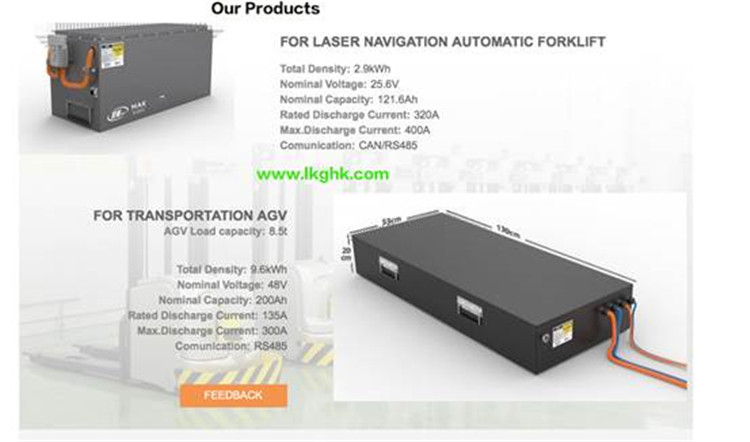- 22
- Dec
Exploration and discovery is conducive to product development of smaller, lighter and lower car batteries
According to foreign media reports, a group of researchers at the Brookhaven National Laboratory (Brookhaven National Laboratory) of the U.S. Department of Energy (DOE) has determined new details about the internal reaction mechanism of lithium metal anode batteries. , An important step for cheaper electric vehicle batteries.
Истраживачи батерија у Броокхавен Натионал Лаборатори (Извор слике: Броокхавен Натионал Лаборатори)

Обнова литијумске аноде
From smart phones to electric vehicles, we can see the tradition. Although lithium batteries have enabled many technologies to be widely used, they still face challenges in providing long-distance power for electric vehicles.
Баттери500, алијанса коју предводе универзитетски истраживачи финансирана од стране Пацифичке северозападне националне лабораторије америчког Министарства енергетике (ПННЛ) и америчког Министарства енергетике, има за циљ да створи батеријску ћелију са густином енергије од 500 Вх/кг. Другим речима, то је двоструко већа густина енергије од данашњих најнапреднијих батерија. У том циљу, алијанса се фокусира на батерије направљене од литијум металних анода.
Lithium metal batteries use lithium metal as the anode. In contrast, most lithium batteries use graphite as the anode. “The lithium anode is one of the key factors in reaching the Battery500 energy density goal,” the researchers said. “The advantage is that the energy density is twice that of existing batteries. First, the specific capacity of the anode is very high; second, you can have a higher voltage battery, and the combination of the two can have a higher energy density.”
Научници су одавно препознали предности литијумских анода; у ствари, литијум метална анода је прва анода спојена са катодом батерије. Међутим, због недостатка „реверзибилности“ аноде, односно способности пуњења путем реверзибилне електрохемијске реакције, истраживачи батерија су на крају користили графитне аноде уместо литијум металних анода за прављење литијумских батерија.
Now, after decades of progress, researchers are confident to realize a reversible lithium metal anode to push the limits of lithium batteries. The key is the interface, the solid material layer that forms on the battery’s electrodes during the electrochemical reaction.
“If we can fully understand this interface, it can provide important guidance for the material design and manufacture of reversible lithium anodes,” the researchers said. “But understanding this interface is quite a challenge because it is a very thin layer of material, only a few nanometers thick, and it is sensitive to air and humidity, so handling samples is tricky.”
Овај интерфејс је визуелизован у НСЛС-ИИ
Да би решили ове изазове и „видели“ хемијски састав и структуру интерфејса, истраживачи су користили Национални извор светлости синхротронског зрачења ИИ (НСЛС-ИИ), кориснички објекат Канцеларије за науку ДОЕ у Националној лабораторији у Брукејвену, који производи супер светли рендгенски зраци за проучавање материјалних својстава интерфејса на атомској скали.
Поред коришћења напредних могућности нСЛС-ИИ, тим такође треба да користи линију снопа (експерименталну станицу) која може да открије све компоненте интерфејса и користи високоенергетске (краткоталасне) рендгенске зраке за откривање кристалних и аморфне фазе.
“The chemistry team adopted the XPD multi-mode approach, using two different techniques provided by the beamline, X-ray diffraction (XRD) and distribution function (PDF) analysis,” the researchers said. “XRD can study crystalline phases, and PDF can study amorphous phases.”
XRD and PDF analysis revealed exciting results: Lithium hydride (LiH) exists in the interface. For decades, scientists have been arguing about the existence of LiH in the interface, creating uncertainty about the basic reaction mechanism that forms the interface.
“LiH and lithium fluoride (LiF) have very similar crystal structures. Our claim about the discovery of LiH has been questioned by some people who believe that we mistake LiF for LiH,” the researcher said.
С обзиром на контроверзу укључену у студију и техничке изазове разликовања ЛиХ од ЛиФ-а, истраживачки тим је одлучио да пружи више доказа за постојање ЛиХ, укључујући спровођење експеримената излагања ваздуху.
“Researchers said: “LiF is stable in air, but LiH is unstable. If we expose the interface to humid air, and if the amount of compound decreases over time, we can confirm that we are indeed seeing LiH, not LiF, and it is LiF. Due to the difficulty of distinguishing LiH from LiF and the air exposure experiment has never been performed before, LiH is most likely to be mistaken for LiF in many literature reports, or it is not observed due to LiH decomposition in a humid environment. ”
Истраживач је наставио. „Припрема узорака коју је урадио ПННЛ је кључна за ово истраживање. Сумњамо да многи људи не успевају да идентификују ЛиХ јер су њихови узорци били изложени влажном окружењу пре експеримента. Ако нисте правилно прикупили узорке, запечатили узорке и узорке за испоруку, можда ћете пропустити ЛиХ. ”
Поред потврде постојања ЛиХ-а, тим је такође решио још једну дугогодишњу мистерију око ЛиФ-а. ЛиФ се дуго сматрао корисном компонентом интерфејса, али нико у потпуности не разуме разлог. Тим је утврдио структурне разлике ЛиФ-а унутар интерфејса и већину структурних разлика самог ЛиФ-а и открио да је први промовисао транспорт литијум јона између аноде и катоде.
Battery scientists from Brookhaven National Laboratory, other national laboratories, and universities continue to cooperate. The researchers said that these results will provide much-needed practical guidance for the development of lithium metal anodes.
